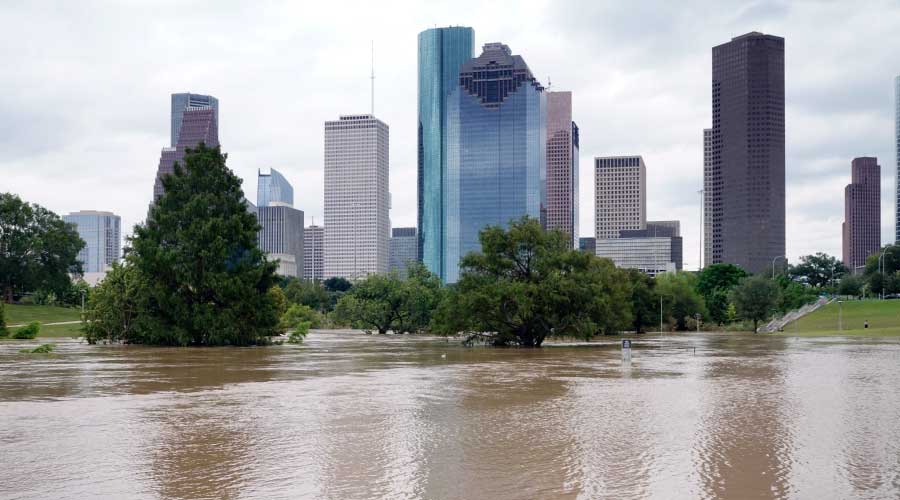Being Prepared for an Emergency Requires a Regularly Updated Emergency Plan
Emergency incidents that could impact a facility run the gamut from fires to tornadoes to bomb threats — or worse. All facilities will eventually come under some type of threat, and it's a facility manager's job to protect the facility and occupants and ensure that business gets back up and running smoothly as soon as possible.
Creating an emergency plan is the best way to prepare for potential problems. Having detailed plans in place for multiple types of emergencies is something facility managers should have — and many do.
The problem is that there's no manual for emergency preparedness and most facility managers (hopefully) have little experience dealing with actual emergencies. That means that even the most prepared, experienced facility managers might miss something in the heat of an emergency. Here are some of the most commonly overlooked areas of emergency planning.
1. Have a Plan
It may seem obvious, but the first step in emergency planning is actually having an emergency plan. Not all organizations have one. "I'm surprised all the time by the amount of small and medium sized businesses that have no plan at all," says Richard Sem, president and security consultant of Sem Security Management, a consulting firm. "Usually the reasoning is either that it won't happen to them or they think they can handle emergencies by the seat of their pants," he says. But trying to make up procedures when everything is hitting the fan isn't a good idea.
Emergency plans should be thorough and cover a range of different types of emergencies. Sem breaks it down into two categories: accidental and purposeful. Accidental includes incidents like fires, chemical spills or natural disasters (tornadoes, hurricanes, floods, etc.). Purposeful incidents include man-made emergencies, such as terrorism, workplace violence or assaults. If an organization has an emergency plan, chances are it will cover the accidental side of things and leave the purposeful man-made emergencies lacking. That's because while facility managers are well aware of the risk of fires or storms, incidents like active shooters or workplace violence seem more far-fetched.
Some facility managers think of emergency plans in completely the wrong way, says Joan Stein, president and CEO of Accessibility Development Associates. "They talk in terms of evacuation without thinking about being prepared. Many focus on saving the building and its contents as opposed to saving the most valuable asset, the people," she says.
Ever since incidents like the Virginia Tech shooting, however, facility managers are at the very least aware of the potential for emergencies like workplace violence. "Those relationship-based issues that come up that lead to workplace violence are actually somewhat common and the press has done a good job of covering them and moving them to the forefront," says John Welling, chairman of NFPA pre-incident planning and chief of emergency services with Bristol Myers Squibb. Seeing incidents in facilities in the news has gotten facility managers to wonder "what if," and hopefully translate that into creating a more comprehensive emergency plan.
One market that has historically been at the forefront of emergency preparedness is education. Protecting children, whether they're eight or 18, has always been a priority. Things like fire, tornado and lockdown drills are becoming even more common than they were 30 years ago. Colleges and universities are typically at the cutting edge of implementing new types of emergency communications systems in the wake of increasing campus violence incidents. "There's a movement now toward borrowing from education the response aspect in cases of workplace violence," says Sem.
2. Update the Plan
When facility managers create an emergency plan (or have inherited one from previous FMs), they may think their task is complete and their facility and occupants are now safe. That can be a big mistake. "Besides not having a plan at all, the second biggest mistake is having a binder gather dust on a shelf," says Sem. "Years ago, they put money and effort into the plan, but then they left it."
The plan needs to be a living document, says Sem, and Welling agrees. "Facility managers should review their emergency plans on at least an annual basis," he says. Welling warns, though, that there are some codes and regulations that require more frequent reviews, such as in the case of hazardous materials. Locally, some jurisdictions require educational facilities to review their plans more often than annually as well. Be sure to research any such requirements in your location.
In addition, key contact information in an emergency plan should be kept in an appendix document so it can be updated as needed without a formal review process, says Welling. "It's not good to put lots of contact information into the plan itself because people forget to update it," he says. Keeping the contact information all in a single document attached to the emergency plan will make updating easier.
Emergency plans should also be workable, says Sem. "If you have a giant binder, when all hell breaks loose, you won't have time to find the information you need. Plans don't have to be lengthy, they have to be usable," he says. They should be organized well with reference tabs in order to get immediately to a section that tells people what to do. Sem also warns against having an electronic-only document. "What happens when your computers are down?"
Related Topics:













